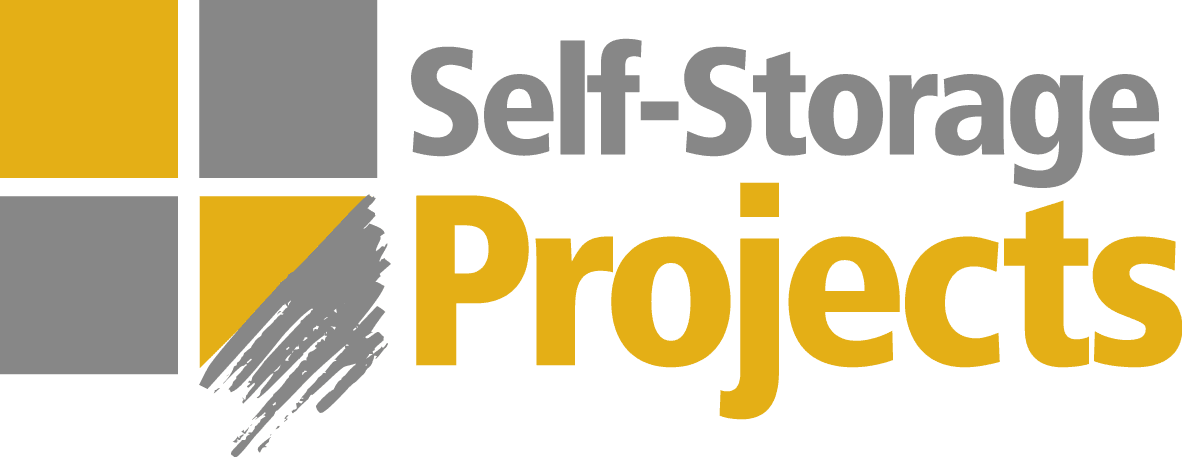Navigating the Regulatory Maze: Challenges and Opportunities for Self-Storage in Spain

Introduction
he self-storage industry in Spain has seen steady growth over the past decade, driven by urbanization, shrinking living spaces, and evolving consumer needs. However, this expansion has not been without challenges, particularly in navigating a regulatory framework that does not yet recognize self-storage as a distinct category.
Unlike in more mature markets such as the United Kingdom or the United States, where specific industry standards and regulations exist, self-storage in Spain often falls into legal gray areas, leading to licensing delays, inconsistent zoning interpretations, and costly compliance issues.
This article explores the regulatory gaps, the licensing hurdles, the role of industry standards like UNE EN 15696, and the need for a proactive approach to lobbying for dedicated self-storage regulations in Spain.
The Misclassification of Self-Storage as “Trasteros” and the Rise of Urban Self-Storage
One of the core regulatory issues facing self-storage in Spain originates from its misidentification as “trasteros” (residential storage rooms). In an effort to make the concept more accessible to the public, the industry adopted the term “alquiler de trasteros” (storage rental), which has unintentionally created confusion among municipal authorities.
Without a specific regulatory framework, municipalities classify self-storage under pre-existing categories. In most cases, they categorize it within existing industrial storage uses, subjecting it to regulations that do not reflect its operational characteristics. However, in many municipalities, it is also incorrectly associated with residential storage, applying inappropriate regulations that do not align with self-storage’s actual use and risk profile.
This issue has become more pronounced in recent years with the increasing trend of developing self-storage centers in urban environments, such as street-level locations or underground floors of residential buildings. While this model caters to urban consumers seeking convenience and accessibility, it has deepened the regulatory confusion. Municipal authorities often treat these developments as extensions of residential storage (see conclusions of the municipality of Sevilla here as an example), enforcing safety and construction standards that do not reflect the actual use and risk profile of self-storage facilities.
For example, in some municipalities:
- Storage units must be built with masonry walls or extend to the ceiling.
- Each unit is treated as a separate fire sector, requiring individual smoke detectors, fire-rated doors, and ventilation systems—a costly and often unnecessary measure.
- Storage units are often designated as ancillary to residential properties within the building. As a result, their use is restricted to residents, prohibiting them from being marketed or leased to the general
The Regulatory Landscape: A Complex Framework
Spain lacks a dedicated legal framework for self-storage facilities, which means that these businesses are classified under existing real estate and industrial regulations, often without consideration for their unique operational model. Municipalities interpret self-storage facilities in different ways:
- Some classify them as industrial spaces, leading to strict zoning restrictions that push facilities to city outskirts rather than recognizing self-storage as a distinct category separate from industrial activity.
- Others mistakenly equate them with “trasteros” (residential storage rooms) found in apartment buildings, imposing fire safety and construction standards that are incompatible with self-storage operations.
This inconsistent classification results in unnecessary restrictions on urban locations, which are often the areas with the highest demand for self-storage services. These requirements fail to consider the operational differences between self-storage and residential ‘trasteros’, where fire risk and usage patterns are entirely different.
The Impact of the Lack of Regulation: Operational and Financial Risks
Despite continued industry growth, the absence of a clear regulatory framework creates multiple challenges:
- Legal Uncertainty: Each municipality applies different interpretations, making project approvals dependent on subjective criteria set by local urban planners. This lack of predictability discourages investment and hinders long-term strategic planning for self-storage operators.
- Unnecessary Construction Costs: Applying residential storage room standards results in excessive safety and infrastructure requirements that drive up construction costs disproportionately. This can make projects financially unviable, especially in urban areas where land prices are already high.
- Risk of Licensing Delays: Even seemingly viable projects can face unexpected administrative roadblocks due to unclear regulations, causing costly delays that affect return on investment.
- Financing Challenges: Investors and financial institutions may be reluctant to fund self-storage projects due to the lack of legal clarity and unpredictable approval processes, limiting the sector’s ability to expand at scale.
- Location Restrictions: Unclear zoning rules can hinder the establishment of new facilities in high-demand urban areas, forcing developers to seek locations on city outskirts where demand may be weaker.
- Operational Inefficiencies: The lack of standardized regulations creates inconsistencies in how self-storage facilities operate across different municipalities, complicating expansion efforts and increasing compliance burdens for operators.
- Customer Access Limitations: In some cases, regulatory misclassification leads to restrictions on who can use the facilities
While these obstacles do not prevent the sector from expanding, they introduce inefficiencies, raise costs, and complicate development. A well-defined regulatory framework would streamline processes, provide legal certainty, and foster a more sustainable growth trajectory for the industry.
The AENOR Standard (UNE EN 15696): A Reference, But Not a Solution
While Spain lacks a national regulation specifically for self-storage, there is a European reference standard: UNE EN 15696, developed by AENOR (Asociación Española de Normalización). However, this standard serves primarily as a set of best practices rather than a binding regulatory framework. It focuses on operational guidelines—covering aspects such as security, access control, and customer contracts—rather than defining zoning, construction, or safety compliance standards that are critical to the industry’s legal recognition.
Furthermore, UNE EN 15696 is not mandatory in Spain, as no national legislation has formally adopted it. This means that local governments are not required to follow its recommendations, allowing municipalities to continue enforcing their own interpretations, which vary widely. The result is an uncertain and inconsistent regulatory environment, where requirements can change significantly depending on location.
Although UNE EN 15696 provides a useful reference point, it is insufficient as a regulatory framework. Spain needs a dedicated legal classification for self-storage that incorporates clear zoning definitions, licensing processes, and fire safety standards while ensuring legal certainty for operators and investors.
The Need for a Regulatory Framework: Learning from International Markets
Other markets have developed clear self-storage regulations, providing valuable lessons for Spain:
- United Kingdom: Self-storage is classified under Class B8 (Storage and Distribution) in the Town and Country Planning (Use Classes) Order 1987, providing a clear zoning framework. Some industrial and commercial properties can be converted into self-storage under permitted development rights, reducing regulatory barriers. This classification ensures predictable licensing processes and facilitates investment and expansion in the sector.
- United States: The Self Storage Association (SSA) has successfully lobbied for self-storage to be recognized as a distinct real estate category in many states. This has led to clearer zoning regulations, streamlined fire safety requirements, and favorable legal treatment for operators and investors. Self-storage facilities benefit from well-established industry standards, making licensing and compliance more predictable.
- France & Germany: While national regulations vary, both countries recognize self-storage as a distinct commercial activity, ensuring it is not misclassified as residential storage. In France, self-storage falls under a commercial real estate classification, simplifying zoning approvals. In Germany, operators must comply with strict building codes, but the sector benefits from established fire safety and operational guidelines that prevent unnecessary confusion.
The Role of Industry Advocacy: A Call to Action
Organizations like the Asociación Española de Self Storage (AESS) are actively working to educate municipalities on the distinctions between self-storage and residential trasteros, propose regulatory frameworks inspired by international best practices, and collaborate with urban planners to establish zoning guidelines specifically tailored to the self-storage sector.
However, a structured advocacy strategy is essential to ensure that self-storage is formally recognized as a distinct category in urban planning and building codes. A potential path forward includes forming a dedicated industry coalition to represent self-storage interests, engaging legal and urban planning experts to draft a proposed regulatory framework, and organizing targeted meetings with municipal and national policymakers to present data-driven arguments on the economic and urban benefits of self-storage.
Additionally, industry stakeholders should work to raise public awareness through media campaigns and industry conferences, emphasizing the role of self-storage in supporting urban density, small businesses, and residential convenience. This requires coordinated efforts from industry stakeholders to engage with policymakers, provide data-backed arguments demonstrating the economic benefits of self-storage, and work towards the development of a national regulatory framework.
A well-structured advocacy campaign could help align Spain’s approach with international best practices, fostering greater clarity, reducing bureaucratic hurdles, and creating a stable environment for future investment and expansion in the sector.
Conclusion
The growth of self-storage in Spain is at a critical juncture. Without clear and dedicated regulations, the industry will continue to face unnecessary bureaucratic barriers, increased costs, and investment uncertainty. The key to unlocking the sector’s full potential lies in establishing self-storage as a distinct real estate category, ensuring standardized licensing processes across municipalities, and adopting internationally recognized best practices such as UNE EN 15696.
Collaboration between industry stakeholders, policymakers, and urban planners is crucial to developing a comprehensive regulatory framework that balances operational feasibility with safety and compliance. Advocacy efforts should focus on demonstrating the economic and social benefits of self-storage, positioning it as an essential urban service that supports businesses, individuals, and overall city infrastructure.
By taking decisive action now, Spain can foster a transparent and predictable regulatory environment that not only enables sustainable industry growth but also enhances consumer access to high-quality storage solutions in urban centers. A well-structured approach will allow self-storage to flourish as an integral part of Spain’s evolving real estate landscape.
